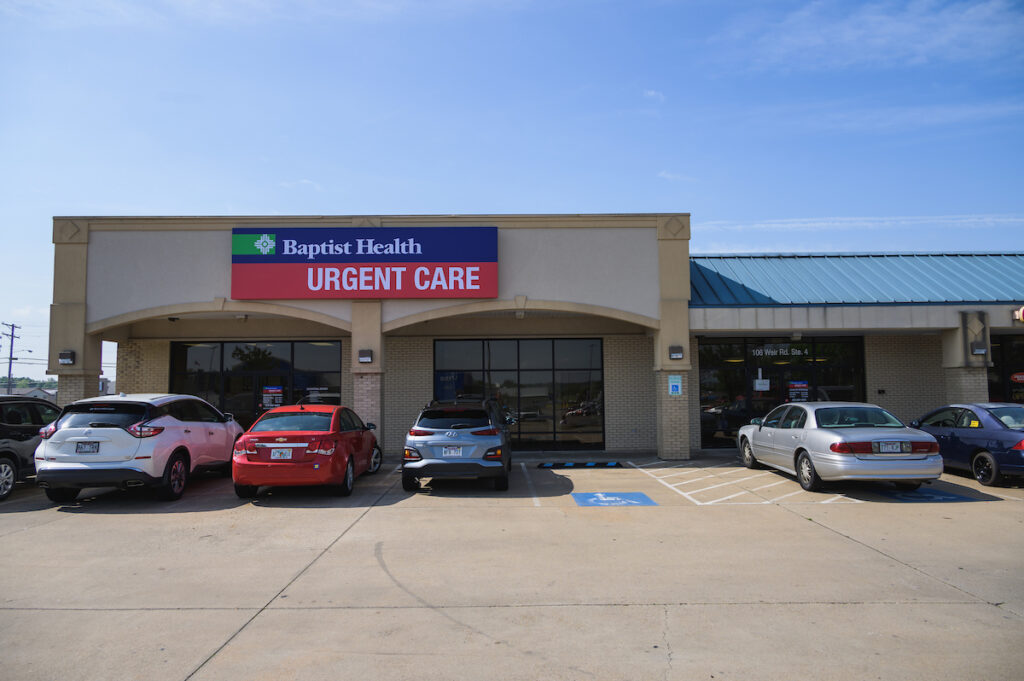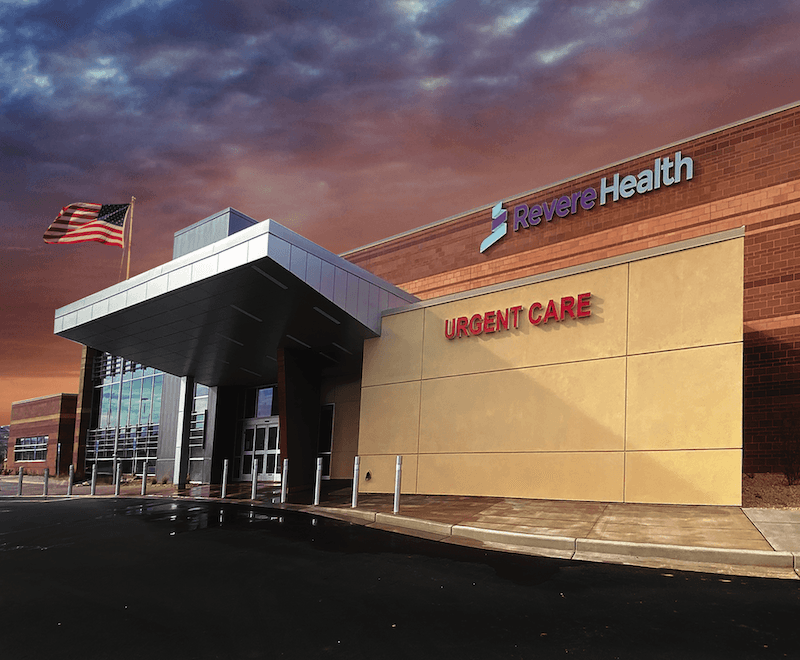Top Tips for Selecting the Right Clinic for Your Urgent Care Needs
Wiki Article
Comprehending the Role of Urgent Care in Offering Timely Treatment for Non-Life-Threatening Conditions
Urgent treatment facilities have arised as a crucial component of the health care landscape, addressing the prompt requirements of patients with non-life-threatening problems. Recognizing the nuances of immediate treatment could substantially impact individual outcomes and the general efficiency of healthcare distribution.What Is Urgent Care?
Immediate treatment refers to a classification of clinical services developed to resolve non-life-threatening conditions that need instant focus. These centers act as an intermediary in between health care medical professionals and emergency spaces, offering a convenient choice for people that require prompt care without the substantial waiting times generally linked with emergency situation divisions.Urgent care centers are usually staffed by clinical experts, consisting of physicians, nurse specialists, and doctor aides, that are trained to detect and deal with a large variety of conditions. Common solutions offered by these facilities consist of therapy for minor injuries, diseases, and infections, as well as diagnostic tests such as X-rays and laboratory job.
The access of immediate care is an essential factor in its allure, as lots of centers operate beyond routine office hours, consisting of weekends and nights. When their main care supplier may not be accessible, this extensive accessibility allows patients to receive prompt treatment. Furthermore, immediate care facilities commonly approve walk-in individuals, eliminating the demand for visits. Overall, immediate care plays an important duty in the health care system, ensuring individuals can access vital clinical solutions quickly and successfully.

When to look for treatment at an urgent treatment facility rather of a key treatment medical professional or an emergency room,Lots of people might find themselves unclear regarding. Urgent treatment is designed to deal with non-life-threatening conditions that need prompt focus but are not severe enough to require an emergency situation area see.
Typically, one need to think about urgent look after issues such as minor fractures, strains, cuts calling for stitches, or infections like urinary system system infections. Additionally, cold or influenza signs, breakouts, and sensitive reactions can additionally be suitably managed in this setting.
It is vital to note that urgent treatment is not ideal for serious emergencies, such as breast discomfort, trouble breathing, or severe bleeding, which necessitate instant emergency clinic intervention.
Individuals that do not have access to a medical care physician or can not secure a timely visit may additionally gain from immediate care solutions. Eventually, comprehending when to make use of urgent care can lead to more efficient medical care distribution, permitting people to receive the appropriate degree of treatment based upon their details wellness demands.
Advantages of Urgent Treatment Centers
Picking immediate treatment facilities for non-life-threatening problems uses a number of advantages that boost client experience and accessibility. One main advantage is the reduced wait times compared to conventional emergency clinic. Immediate treatment facilities generally operate a first-come, first-served basis, permitting people to obtain timely medical focus without the long hold-ups commonly connected with health center setups.Furthermore, urgent care facilities offer extended hours, consisting of weekend breaks and nights, fitting clients with varying timetables. This versatility ensures that people can seek care when it is most hassle-free for them, additionally promoting prompt intervention.

Furthermore, these centers typically provide a thorough array of solutions, consisting of her response small procedures and diagnostic tests, all under one roofing. This combination of solutions not just enhances the client experience but additionally fosters a more natural method to managing non-life-threatening health and wellness problems, inevitably profiting overall person results.
Typical Problems Treated
At immediate care facilities, a variety of non-life-threatening conditions can be properly treated, giving patients with obtainable and prompt medical help. These centers are particularly skilled at resolving problems that call for prompt interest yet do not pose an immediate danger to life or arm or leg.Typical problems dealt with at immediate care centers include small injuries such as pressures, strains, and cracks. Furthermore, they take care of illnesses like colds, flu, and infections, including urinary tract infections and sinus problems. Skin disease, varying from breakouts to insect attacks, are also frequently dealt with. Urgent care centers are outfitted to execute necessary diagnostic tests, such as X-rays and laboratory examinations, allowing them to offer comprehensive care.
Additionally, urgent treatment carriers can carry out inoculations, assisting to stop the spread of infectious conditions - Urgent Care. They additionally provide services for small procedures, such as suturing wounds or draining pipes abscesses. By using these diverse solutions, immediate care facilities play a crucial role in linking the space between health care and emergency solutions, guaranteeing patients get timely therapy for a wide variety of problems without the need for lengthy wait times typically connected with emergency areas
How Urgent Treatment Supports Health Care System
Urgent care facilities play a critical function in sustaining the overall medical care system by reducing the worry on emergency divisions and offering prompt access to healthcare for non-life-threatening conditions. By managing cases such as small injuries, infections, and diseases, urgent treatment centers permit emergency situation divisions to concentrate on even more critical clients calling for immediate interest.In addition, urgent treatment facilities boost healthcare access, offering prolonged hours and a much more convenient option to traditional health care settings. This availability is specifically helpful for people who might not have a routine physician or who require instant therapy outside of typical office hours. Therefore, immediate treatment facilities effectively minimize wait times and boost person complete satisfaction.
Furthermore, urgent care facilities add to cost savings for Homepage both individuals and the health care system by supplying lower-cost solutions compared to emergency departments. This monetary effectiveness is important in an age of rising healthcare costs, allowing clients to get needed care without incurring inflated costs.
Conclusion
Finally, urgent care centers play an important role in the healthcare system by supplying timely treatment for non-life-threatening conditions. By connecting the gap between health care and emergency clinic, these facilities ensure that patients obtain prompt medical focus without the prolonged wait times generally related to emergency situation departments. The ease of access and efficiency of immediate care facilities add considerably to easing the general burden on medical care resources, boosting individual outcomes, and advertising a more efficient healthcare shipment system.Urgent care facilities have arised as an important part of the health care landscape, resolving the prompt requirements of individuals with non-life-threatening conditions. Immediate care brows through normally sustain lower out-of-pocket expenditures compared to emergency situation department gos to, making treatment more cost effective for patients without jeopardizing top quality. Immediate care centers are outfitted to carry out needed analysis tests, such as X-rays and lab tests, allowing them to give extensive treatment.
By supplying these diverse services, urgent treatment facilities play an important duty in linking the gap between main treatment and emergency situation services, making certain clients get prompt therapy for a vast range of conditions without the requirement for lengthy delay times typically connected with emergency spaces.
Additionally, immediate treatment facilities boost healthcare availability, my company supplying extensive hours and an extra hassle-free option to typical key treatment setups.
Report this wiki page